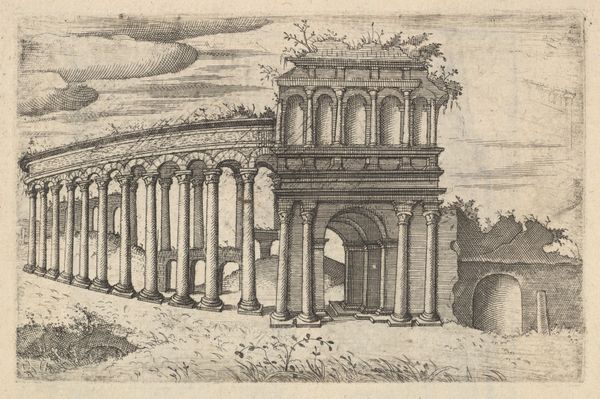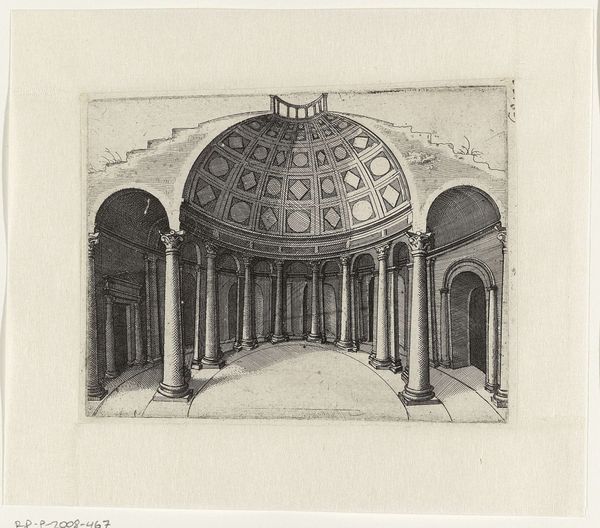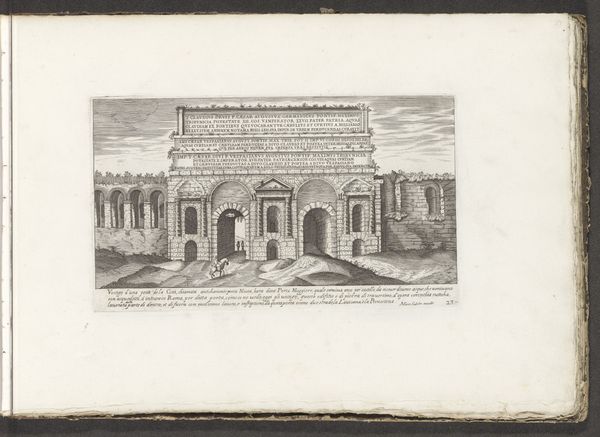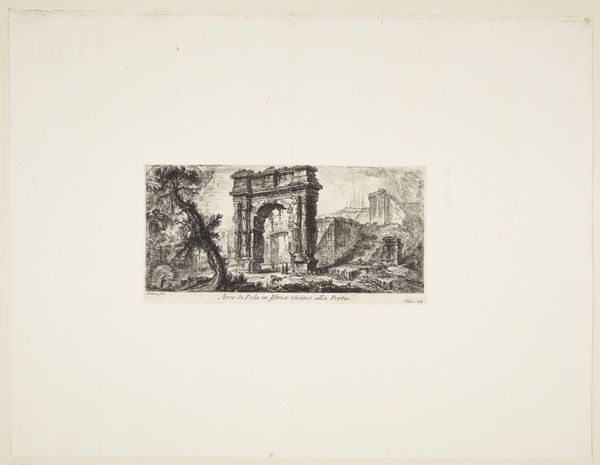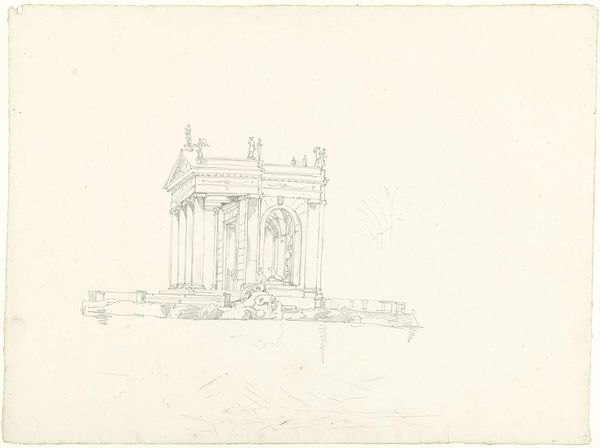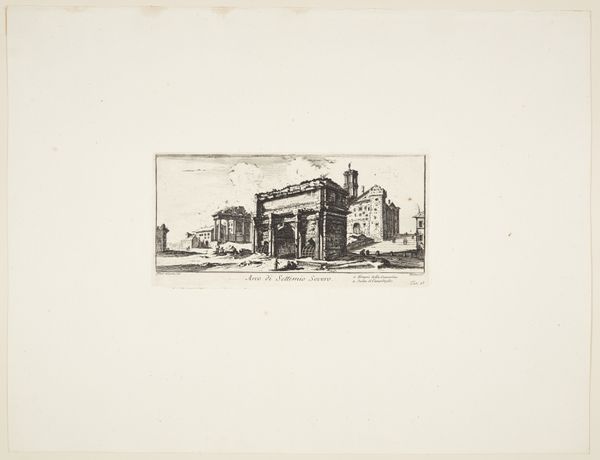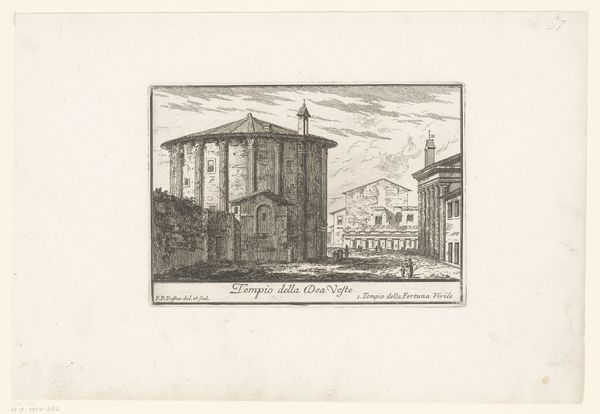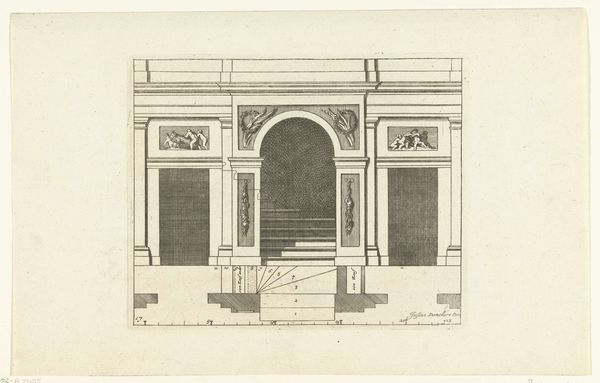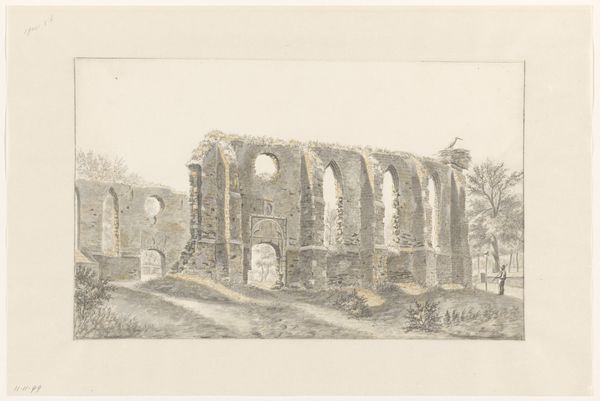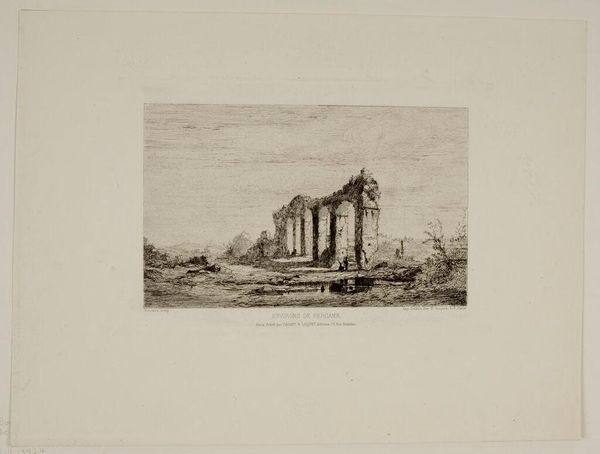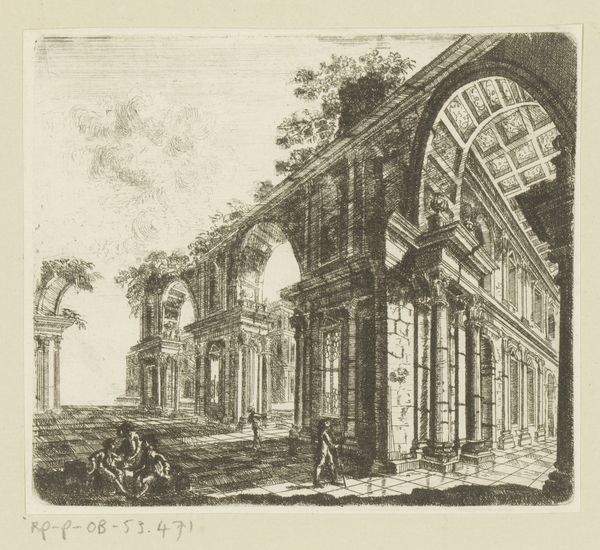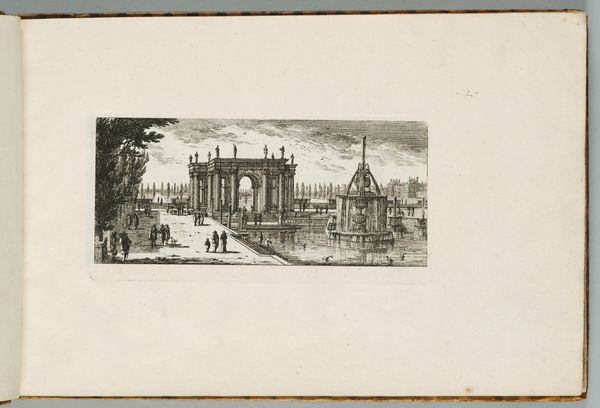
print, engraving, architecture
# print
#
pen sketch
#
old engraving style
#
landscape
#
mannerism
#
cityscape
#
engraving
#
architecture
Dimensions: height 86 mm, width 136 mm
Copyright: Rijks Museum: Open Domain
Lambertus Suavius created this etching of a ruined arcade and collonade sometime between 1514 and 1564. Suavius, working in the Netherlands, was part of a broader artistic movement known as Northern Mannerism. His work reflects the cultural exchange between Northern Europe and Italy during the Renaissance. The depiction of ruins was a popular motif, often symbolizing the transient nature of human achievements and the inevitable decay of civilizations. What interests me is how the image captures a moment of transition. We are invited to contemplate the relationship between past glory and present decline. The ruins remind us that all structures, no matter how grand, are subject to time and change. The natural world encroaches upon the architectural remains, as plants and vegetation reclaim what was once a carefully constructed space. It presents a dialogue between nature and culture. There is something beautiful in the way that nature adapts and reclaims, even as it mourns what has been lost.
Comments
No comments
Be the first to comment and join the conversation on the ultimate creative platform.
